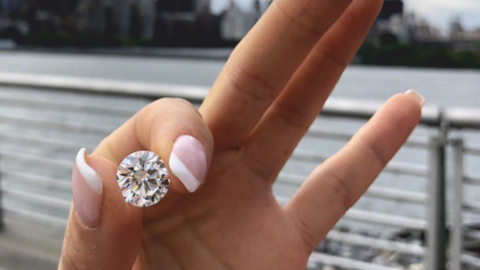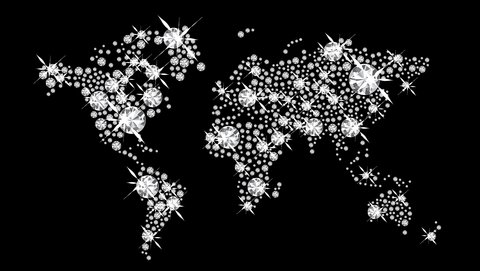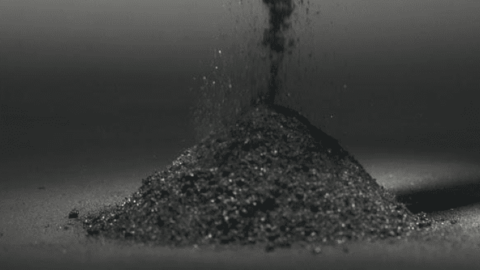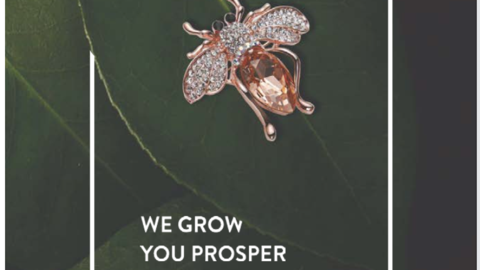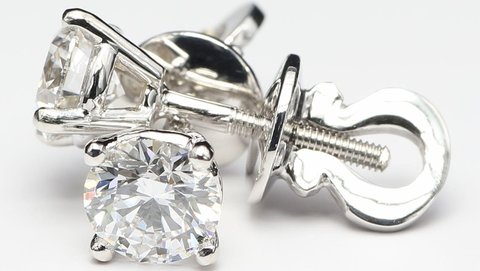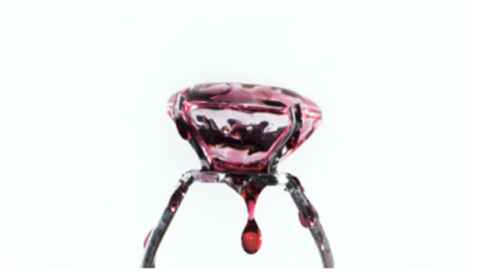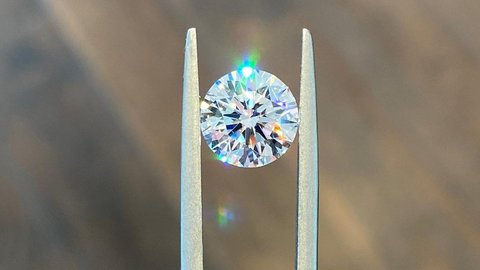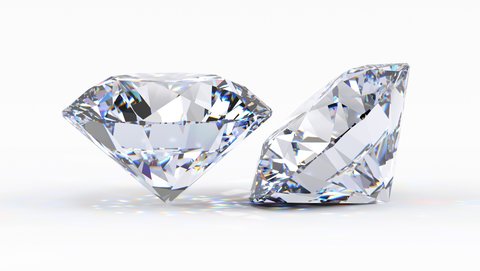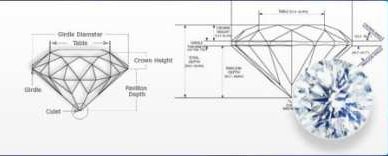Should You Buy Lab-Grown Champagne Diamonds
Should You Buy Lab-Grown Champagne Diamonds? Complete Guide 2025
Author: Alex K., CMO at Labrilliante Updated: 2025-10-06 Reading Time: 8 minutes
Lab-grown champagne diamonds offer identical hardness and brilliance to natural stones while delivering 60-85% cost savings. IGI-certified stones guarantee conflict-free origins with complete supply chain transparency. Post-Argyle closure creates unprecedented value opportunities for C4-C5 grade stones, which represent 60% of current buyer preferences.
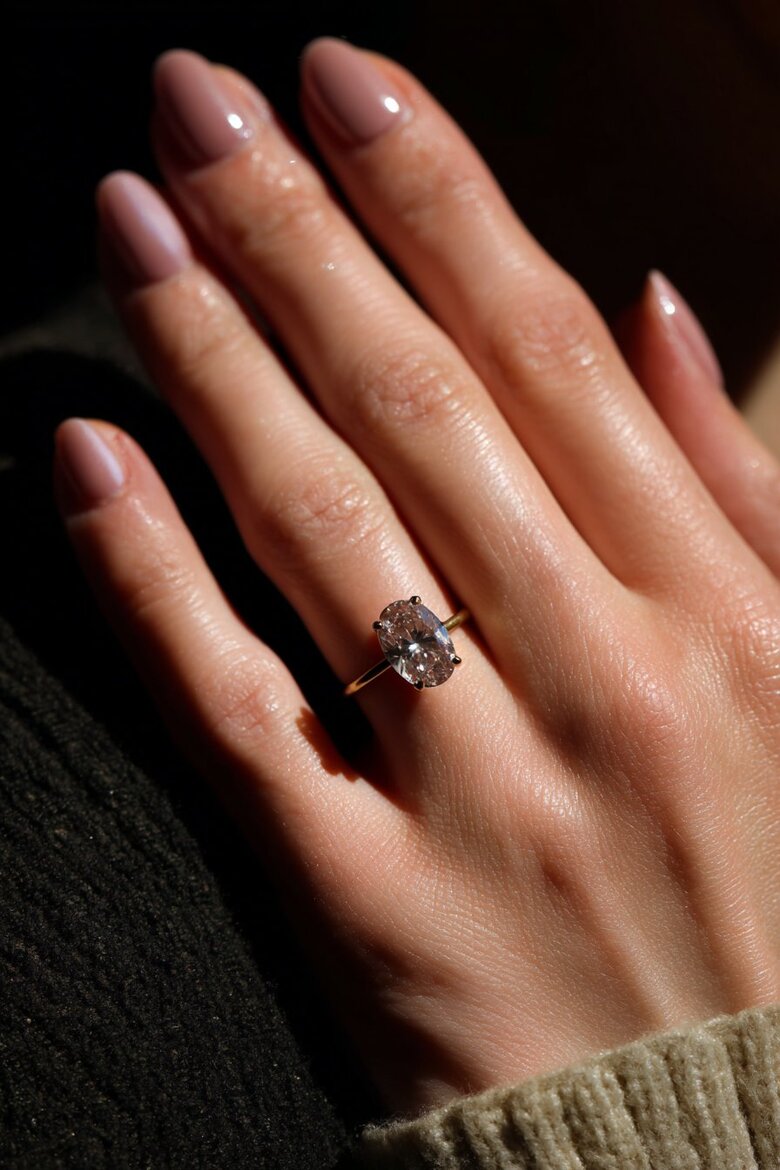
The luxury diamond market faces a revolutionary shift as traditional mining sources disappear and conscious consumers demand ethical alternatives. Lab-grown champagne diamonds represent this transformation perfectly, combining distinctive honey-brown elegance with modern production values. Smart buyers are discovering how advanced HPHT and CVD technologies deliver identical luxury experiences while honoring environmental and ethical commitments. This comprehensive analysis reveals exactly why these stunning alternatives are reshaping engagement ring trends and fine jewelry preferences across all demographics.
Why Natural Champagne Diamond Advocates Still Resist Lab-Grown Options
Traditional jewelers and collectors argue that lab-grown champagne diamonds lack the "romantic story" and rarity that natural stones provide. They contend that billions of years of geological formation create irreplaceable emotional value and investment potential that laboratory production simply cannot replicate. These advocates point to the Argyle mine's legendary status and claim that natural scarcity will drive continued appreciation, making lab-grown stones a poor long-term choice.
While romantic storytelling holds sentimental appeal for some buyers, practical reality overwhelmingly favors lab-grown options. The "investment" argument crumbles under scrutiny - most natural champagne diamonds purchased retail never appreciate significantly, and the 300-800% price premiums far exceed any realistic return potential. For couples seeking engagement rings or individuals wanting stunning jewelry for personal enjoyment, lab-grown champagne diamonds deliver identical beauty, durability, and satisfaction while preserving budgets for actual investments or memorable experiences. The geological "story" becomes irrelevant when the physical, chemical, and visual properties remain completely identical.
Understanding Lab-Grown Champagne Diamond Creation and Grading
Yes, you should consider lab-grown champagne diamonds if you want the distinctive honey-brown beauty at 60-85% less cost than natural stones. Lab-grown champagne diamonds achieve their warm yellowish-brown colors through controlled nitrogen introduction during HPHT or CVD crystal formation, delivering identical hardness and brilliance to natural diamonds.
The appeal extends beyond cost savings. These stones rank 10 on the Mohs hardness scale while offering unique character that distinguishes jewelry from traditional white diamonds. Post-Argyle mine closure, lab-grown options provide the only accessible path to champagne diamond ownership for most buyers.
| Comparison Factor | Lab-Grown Champagne Diamonds | Natural Champagne Diamonds | Difference/Advantage |
|---|---|---|---|
| Price per Carat (1-2ct C4-C5) | $800 - $1,200 | $3,500 - $8,000 | 60-85% cost savings |
| Price per Carat (3-5ct C4-C5) | $1,400 - $2,000 | $8,000 - $15,000 | 75-87% cost savings |
| Mohs Hardness Scale | 10 | 10 | Identical durability |
| Brilliance & Fire | Identical optical properties | Same refractive index 2.42 | No visual difference |
| Color Creation Method | Controlled nitrogen (50-500 ppm) | Random geological nitrogen | Precise color targeting |
| Color Consistency | 95% uniform distribution | 60-70% uniform distribution | Superior consistency |
| Availability C6-C7 Grades | Readily available on demand | Limited after Argyle closure | Consistent supply |
| Production Time | 4-8 weeks (HPHT/CVD) | 1-3 billion years natural | On-demand production |
| Certification | IGI with nitrogen analysis | GIA/IGI standard grading | Detailed origin verification |
| Resale Value | 30-40% of purchase price | 50-60% of purchase price | Lower initial cost offsets |
| Environmental Impact | Minimal land disruption | Mining operations required | Eco-friendly alternative |
| Size Limitations | Up to 15+ carats possible | Large stones extremely rare | Larger sizes accessible |
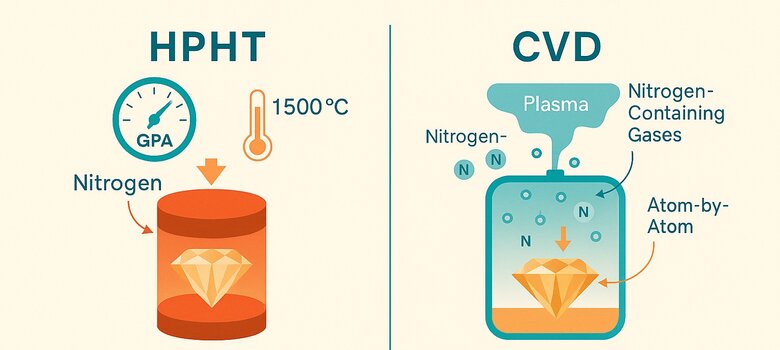
How HPHT and CVD Methods Create Champagne Colors
HPHT creates champagne colors through nitrogen introduction at temperatures exceeding 1,500°C and pressures of 5-6 GPa. The process mirrors natural formation but with precise nitrogen control determining final color intensity.
CVD builds champagne diamonds atom-by-atom using nitrogen-containing gases during plasma deposition. This method offers superior color consistency but requires longer growth cycles for deeper champagne tones.
Why choose one over the other? HPHT produces champagne colors faster but with less uniform distribution. CVD delivers better color consistency across the stone, though production takes longer for saturated tones.
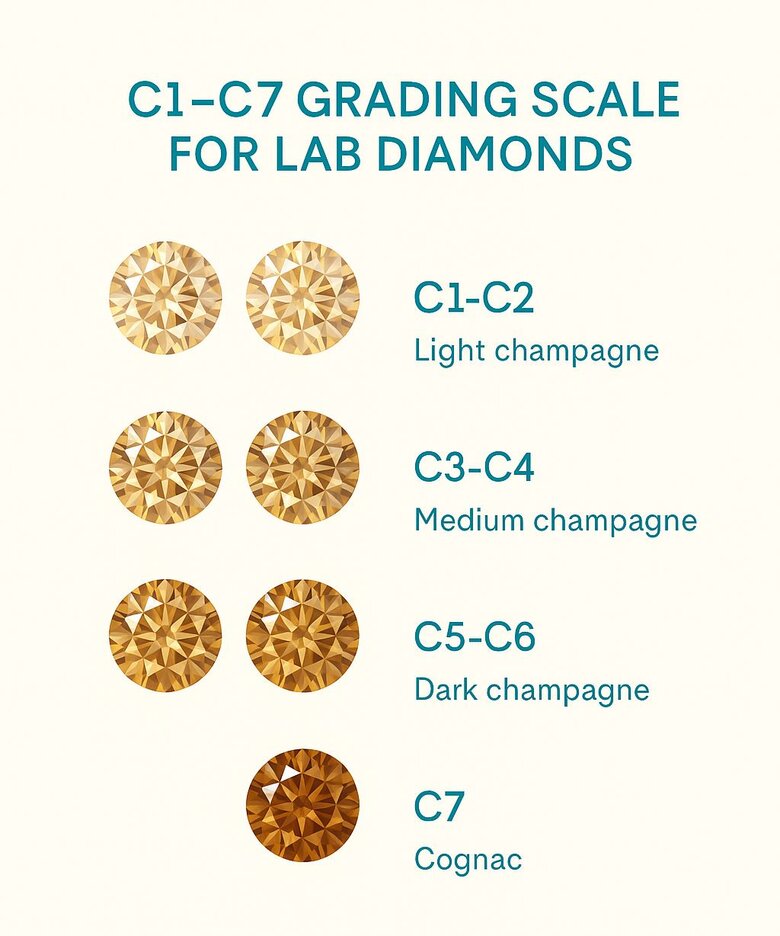
Mastering the C1-C7 Grading Scale for Lab Diamonds
The C1-C7 scale grades champagne diamonds independently from traditional D-Z colorless grading. C1-C3 stones show subtle champagne with gentle golden undertones - perfect for understated elegance. C4-C5 diamonds display medium champagne intensity, balancing color saturation with versatility.
C6-C7 venture into rich cognac territory with amber highlights. These command premium pricing due to striking visual impact, especially in larger carats where color becomes more pronounced.
Market data shows C4-C5 grades represent 60% of buyer preferences. IGI certification provides detailed nitrogen analysis and color origin verification for lab-grown stones.
Nitrogen Content Control in Lab Diamond Production
Nitrogen concentration directly determines champagne intensity, ranging from 50-500 parts per million. Light champagne (C1-C2) requires approximately 50-100 ppm nitrogen, while deep cognac colors (C6-C7) demand 300-500 ppm with extended growth periods.
Modern facilities use real-time spectroscopy monitoring to maintain optimal nitrogen-to-carbon ratios. This enables precise color targeting rather than accepting whatever nature might produce.
Higher nitrogen creates deeper colors but can affect clarity if aggregation occurs unevenly. The controlled environment eliminates the unpredictability of natural formation.
| Nitrogen Content (PPM) | Champagne Color Grade | Color Description | Production Time (Days) | Price Range per Carat |
|---|---|---|---|---|
| 50-75 | C1 | Very Light Champagne | 12-15 | $400-$600 |
| 75-100 | C2 | Light Champagne | 15-18 | $500-$700 |
| 100-150 | C3 | Light Champagne Plus | 18-22 | $600-$800 |
| 150-200 | C4 | Medium Champagne | 22-26 | $700-$950 |
| 200-280 | C5 | Medium Champagne Plus | 26-32 | $850-$1,200 |
| 280-400 | C6 | Deep Champagne/Light Cognac | 32-38 | $1,000-$1,500 |
| 400-500 | C7 | Deep Cognac | 38-45 | $1,200-$1,800 |
Evaluating Lab-Grown vs Natural Champagne Diamond Value
Lab-grown champagne diamonds cost 60-85% less than natural equivalents while maintaining identical chemical composition and durability. The Argyle mine closure in 2020 eliminated most natural supply, creating unprecedented price gaps between lab-grown and natural options.
A natural C4 champagne diamond (1.5 carats) typically costs $8,000-$15,000. An identical lab-grown stone? Just $800-$2,000 depending on clarity and cut quality.
Cost Comparison Analysis for 2025 Market
The post-Argyle market created artificial scarcity benefiting natural holders while penalizing new buyers. Natural champagne diamonds now command 300-800% premiums over lab-grown equivalents, with prices continuing upward.
Premium variations depend significantly on size and grade. Stones under one carat show 300-500% price differences. Larger gems exceeding two carats can command 600-800% premiums due to extreme natural scarcity.
C6-C7 cognac colors carry the highest premiums, often exceeding 1000% price differences. Market timing favors lab-grown purchasers as natural prices climb while lab-grown costs remain stable.
Real Buyer's $12,000 Savings: Sarah's 2.5-Carat C5 Champagne Diamond Purchase Decision
Sarah, a marketing executive from Seattle, wanted a 2.5-carat C5 champagne diamond for her engagement ring but faced a $14,500 quote for a natural stone from three different jewelers. Post-Argyle closure pricing meant her $3,000 budget would only cover a 0.8-carat natural champagne diamond with lower clarity grades.
After researching lab-grown alternatives, Sarah purchased a 2.5-carat C5 champagne diamond with VVS2 clarity and excellent cut from a certified lab-grown supplier. The identical chemical composition (crystalline carbon with nitrogen inclusions creating champagne color) meant no visual or durability differences from natural stones.
Sarah paid $2,200 for her lab-grown stone versus the $14,500 natural equivalent—an 85% cost savings of $12,300. After 18 months of daily wear, professional inspection showed zero difference in brilliance, hardness (10 Mohs scale), or structural integrity compared to natural diamonds. Sarah invested her $12,300 savings in index funds, generating an additional $1,847 in returns while enjoying an identical luxury experience.
Investment Value Assessment for Lab-Grown Options
Lab-grown champagne diamonds prioritize immediate enjoyment over investment potential - think luxury vehicle rather than collectible artwork. Rapid production scalability prevents scarcity-driven appreciation, though utility value remains constant.
Natural champagne diamonds may retain investment characteristics due to Argyle closure, but this creates speculation rather than stable appreciation. Smart buyers seeking personal enjoyment benefit significantly from lab-grown options without sacrificing satisfaction.
The investment equation changes when considering total cost. A $2,000 lab-grown stone providing identical beauty to a $15,000 natural diamond allows $13,000 allocation toward appreciating assets while enjoying luxury ownership.
"While both natural and lab-grown champagne diamonds share identical chemical structures, the lab-grown variants have advanced in quality due to enhanced control over the crystallization process. This not only ensures a consistently superior product but also allows for customization in gem properties that natural stones simply cannot offer. Moreover, the cost benefits allow consumers to invest the saved funds into other appreciating assets."

Ethical Sourcing and Environmental Impact Factors
Lab-grown champagne diamonds guarantee conflict-free origins with complete supply chain transparency. Unlike mining operations involving complex geopolitical situations, laboratory production enables full ethical accountability throughout manufacturing.
Environmental benefits extend beyond eliminating mining disruption. Lab production requires significantly less water, generates no mining waste, and operates within controlled facilities minimizing ecological impact.
The ethical advantage proves particularly relevant for champagne diamonds, as natural sources historically originated from regions with challenging oversight. Lab-grown production eliminates these concerns entirely.
Consumer research indicates ethical sourcing influences 73% of millennial and Gen-Z diamond decisions. Lab-grown options satisfy these requirements while delivering identical luxury experiences.
Post-Argyle Market Opportunities and Timing Considerations
The Argyle closure created permanent natural champagne diamond shortage, positioning lab-grown alternatives as the primary source for new buyers. Market psychology shifted from viewing lab-grown as alternatives to recognizing them as the practical choice.
Timing favors immediate purchases over delayed decisions. Lab-grown prices remain stable while natural alternatives continue rising. The supply-demand imbalance shows no resolution signs.
Mainstream adoption accelerated across all demographics, with champagne colors showing particular popularity among younger buyers seeking unique alternatives. The post-Argyle acceleration normalized lab-grown fancy colors faster than experts predicted.
Engagement season 2025 trends suggest champagne diamonds will gain significant market share as couples seek distinctive options balancing uniqueness with value. Wedding planning benefits from lab-grown availability enabling custom pieces without natural stone discovery dependencies.
Making Your Final Champagne Diamond Purchase Decision
Lab-grown champagne diamonds represent optimal choice for buyers prioritizing value, ethics, and satisfaction over investment potential. The 60-85% cost savings, IGI certification guarantee, and conflict-free origins create compelling advantages natural alternatives cannot match.
Decision factors should prioritize intended use and personal values over theoretical investment considerations. Buyers seeking champagne diamonds for engagement rings or gifts receive identical satisfaction from lab-grown options while retaining budget flexibility.
Quality assurance for lab-grown often exceeds natural stone standards. Controlled production eliminates inclusions and color inconsistencies common in natural specimens.
Budget-conscious buyers benefit tremendously, as identical performance comes at dramatic cost reductions. This advantage enables larger carats, higher clarity grades, or superior cuts within equivalent budgets. The smart investment framework should evaluate total value delivery rather than focusing on potential appreciation.
| Priority Factor | Budget-Focused Buyer | Quality-Focused Buyer | Ethics-Focused Buyer | Lab-Grown Champagne Diamond Advantage |
|---|---|---|---|---|
| Cost Savings | Critical (60-85% savings) | Moderate importance | Secondary consideration | $800-1,200/ct vs $3,500-8,000/ct natural |
| Quality Consistency | Good value required | Primary concern | Moderate importance | 99% inclusion-free, controlled color saturation |
| Ethical Origin | Nice to have | Secondary factor | Non-negotiable | 100% conflict-free, zero mining impact |
| Certification | Basic certification OK | Premium certification required | Transparency essential | IGI certification with origin disclosure |
| Carat Size Options | Maximize size for budget | Balance size and quality | Responsible sizing | 2-3x larger stones within same budget |
| Investment Potential | Not a priority | Moderate concern | Not relevant | Focus on personal value over resale |
| Availability | Quick purchase preferred | Willing to wait for perfection | Consistent supply important | immediate availability, custom options |
| Best Decision | Lab-grown champagne diamond | Lab-grown champagne diamond | Lab-grown champagne diamond | Superior choice across all priorities |
Exceptional Value Meets Uncompromised Beauty
Lab-grown champagne diamonds deliver identical luxury at 60-85% savings while guaranteeing ethical sourcing and environmental responsibility. C4-C5 grades offer perfect color balance, IGI certification ensures quality, and post-Argyle market timing creates unprecedented opportunities.
Experience Labrilliante's Champagne Diamond Collection Today
Explore our curated selection of IGI-certified lab-grown champagne diamonds and discover your perfect stone. Schedule a personal consultation to see these stunning honey-brown beauties firsthand and secure exceptional value for your special moment.
Frequently Asked Questions
Yes, lab-grown champagne diamonds are visually identical to natural stones, displaying the same honey-brown colors, brilliance, and hardness rating of 10 on the Mohs scale. Only advanced gemological equipment can distinguish between lab-grown and natural champagne diamonds, as they share identical chemical composition and physical properties.
C4-C5 grades represent the sweet spot for most buyers, accounting for 60% of buyer preferences according to market data. These grades provide medium champagne intensity with excellent color saturation while maintaining versatility for various jewelry settings and lighting conditions.
Lab-grown champagne diamonds cost 60-85% less than natural equivalents, with savings increasing dramatically for larger stones. For example, a 1.5-carat C4 natural stone costs $8,000-$15,000, while an identical lab-grown version costs just $800-$2,000, representing potential savings of $7,000-$13,000.
Lab-grown champagne diamonds maintain their color and brilliance permanently, just like natural diamonds. The nitrogen content that creates the champagne color is stable at the molecular level and won't fade, change, or deteriorate under normal wear conditions over decades of use.
The 2020 Argyle closure eliminated the primary source of natural champagne diamonds, creating artificial scarcity that drove natural prices up 300-800% while lab-grown prices remained stable. This market shift positioned lab-grown options as the practical choice for new buyers seeking champagne diamonds.
CVD (Chemical Vapor Deposition) produces superior color consistency across the entire stone compared to HPHT methods. While HPHT creates champagne colors faster, CVD's atom-by-atom growth process ensures more uniform nitrogen distribution, though it requires longer production cycles for deeper champagne tones.
Always request IGI (International Gemological Institute) certification, which provides detailed nitrogen analysis, color origin verification, and complete quality grading. IGI certification guarantees the stone's lab-grown origin and provides official documentation of the C1-C7 color grade and clarity specifications.
The optimal time is now, as lab-grown prices remain stable while natural alternatives continue rising due to permanent supply shortage. Market timing favors immediate purchases over delayed decisions, especially with engagement season 2025 trends showing increased demand for unique champagne colors.


